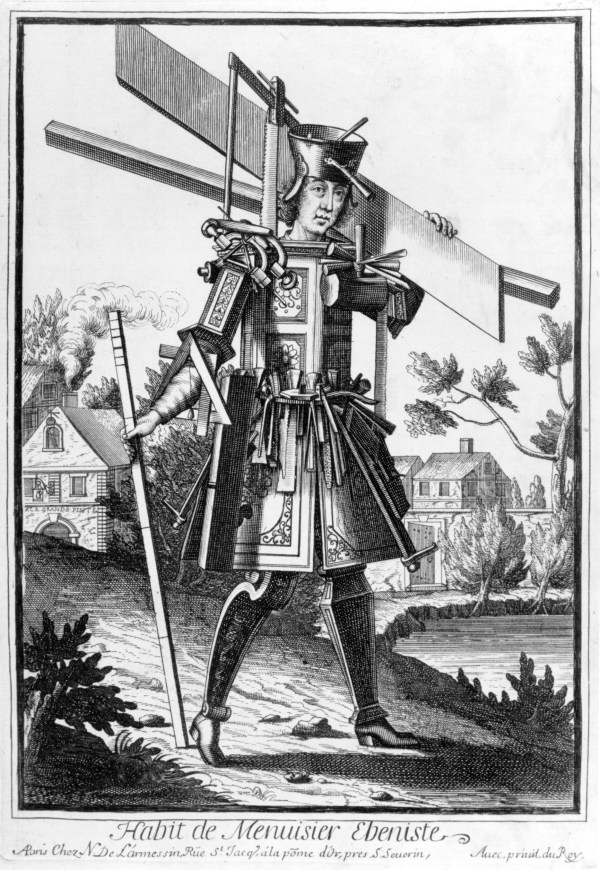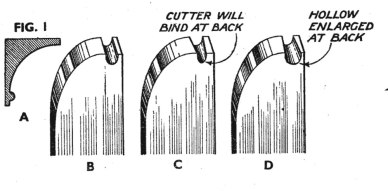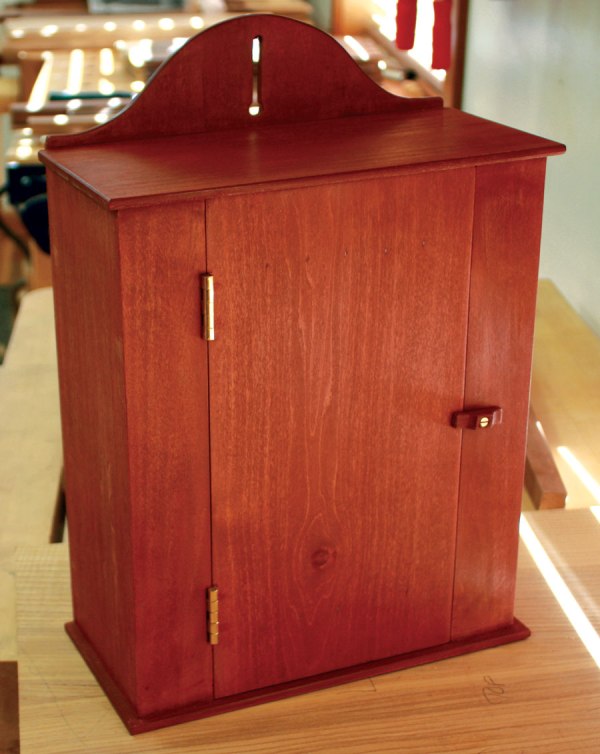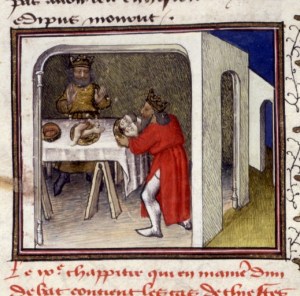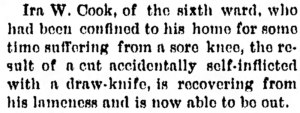André Roubo: Elbow Grease, Tallow and Books –
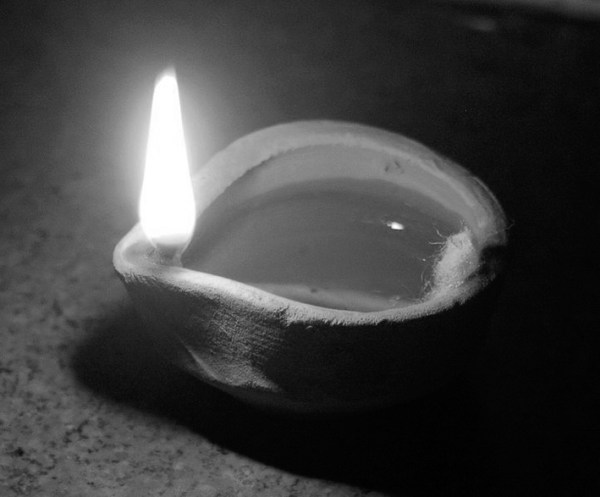
Editor’s note: The below entry is part of a series of articles we have commissioned Brian Anderson to write about André Roubo in preparationd for the publication of “To Make as Perfectly as Possible: Roubo on Marquetry.” Brian, the translator for “Grandpa’s Workshop,” also wrote this entry on Roubo’s famous dome.
It must have been a popular topic for the local gossips – the apprentice joiner André Roubo begging, here and there, a cup of lard or tallow from the taverns and housewives in the Paris neighborhood.
A boy from a poor family begging a cup of lard for his mother to cook, would have been one thing. But the young André did not want it to cook with, but to fuel a simple oil lamp for light to study by. At the time, in the 1750s, it would have been rare enough for an ordinary worker to even know how to read. Spending money on learned books on geometry, mathematics, perspective and design and then plowing through them would have been a scandal in itself.
Roubo had been born in 1739 into a working class family. His father was a joiner, but according to the noted French architect, Louis-Auguste Boileau, who wrote a short biography of Roubo in 1834, the father was a worker of the crudest sort. The young man, apprenticed to his father at 12 or so, soon realized both that he loved the theory and practice of joinery, and that if he did not want to spend his life doing the lowest sorts of work for pennies a day, he would have to figure a way up and out himself.
Boileau wrote that he threw himself into his studies, going hungry sometimes to purchase his first books out of the pittance his father allowed him for his work. The young joiner attracted the notice of others with his enthusiasm, talent and thirst for learning as he worked for his father, eventually becoming a joiner in his own right.
But his big break came when a noted architect, Jean-Francois Blondel, took Roubo under his tutelage and gave him free tuition to his well-regarded school of architecture in Paris.
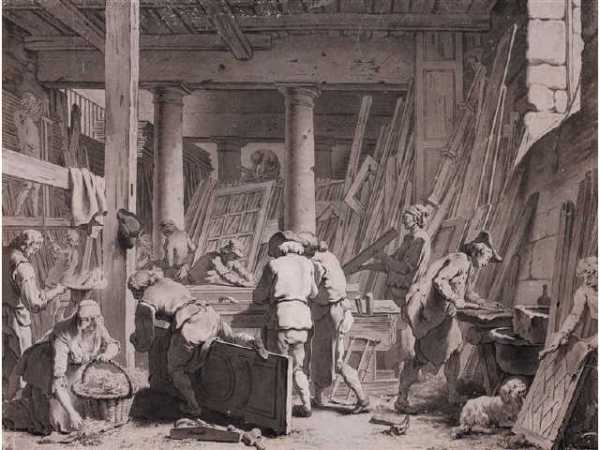
For five years, Roubo worked in his trade during the day; and then evenings, weekends, every free moment available, he spent pouring over the lessons Blondel set out for him. Mathematics, mechanics, perspective, design, different types of drawing. Plus, the building blocks of architecture, which also gave him enormous insight into his own trade.
Roubo proved as apt at these studies as he had at the practice of joinery, but Boileau notes that unlike some presented with a similar opportunity, Roubo apparently loved his craft. He loved to work wood, and was not tempted to move “up” into architecture.
Blondel was also a practicing architect, and a member of the French Academy of the Fine Arts, and his young protégé also proved adept at extending his circle of acquaintances from the people he met through the school and among the architect’s circles of friends and colleagues.
These connections would later prove invaluable, as Roubo’s thoughts turned from his studies to writing his own books.
— Brian Anderson
